
The Atari Lynx is an 16-bit fourth-generation hand-held game console released by Atari Corporation in September 1989 in North America and 1990 in Europe and Japan. It was the first handheld game console with a color liquid-crystal display. Powered by a 4 MHz 65C02 8-bit CPU and a custom 16-bit blitter, the Lynx was more advanced than Nintendo's monochrome Game Boy, released two months earlier. It also competed with Sega's Game Gear and NEC's TurboExpress, released the following year.
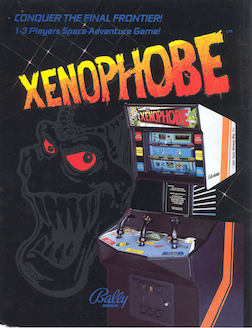
Xenophobe is a video game developed by Bally Midway and released in arcades in 1987. Starbases, moons, ships, and space cities are infested with aliens, and the players have to kill the aliens before each is completely overrun. The screen is split into three horizontally-scrolling windows, one for each of up to three players, yet all players are in the same game world.

Skate or Die! is a skateboarding game released by Electronic Arts (EA) in 1987 for the Commodore 64. It is EA's first internally developed game. Ports for the Apple IIGS, MS-DOS, Amstrad CPC, and ZX Spectrum were released the following years. It was ported to the Nintendo Entertainment System (NES) by Konami, published under the company's Ultra Games branding.

Blockout is a puzzle video game published in 1989 by California Dreams. It was developed in Poland by Aleksander Ustaszewski and Mirosław Zabłocki. American Technos published an arcade version. Blockout is an unlicensed, 3D version of Tetris.
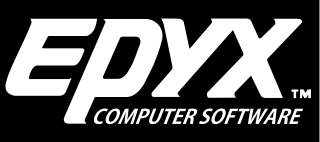
Epyx, Inc. was a video game developer and publisher active in the late 1970s and 1980s. The company was founded as Automated Simulations by Jim Connelley and Jon Freeman, originally using Epyx as a brand name for action-oriented games before renaming the company to match in 1983. Epyx published a long series of games through the 1980s. The company is currently owned by Bridgestone Multimedia Group Global.

Klax is a puzzle video game released in arcades in 1990 by Atari Games while Namco distributed the game in Japanese markets. It was designed and animated by Mark Stephen Pierce with the software engineering done by Dave Akers. The object is to catch colored blocks tumbling down a machine and arrange them in colored rows and patterns to make them disappear. Klax was originally published as a coin-op follow-up to Tetris, about which Atari Games was in a legal dispute at the time.

Paperboy is an arcade action game developed and published by Atari Games, and released in 1985. The player takes the role of a paperboy who delivers a fictional newspaper called The Daily Sun along a street on his bicycle. The arcade version of the game featured bike handlebars as the controller.
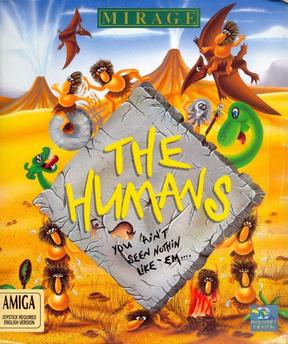
The Humans is a puzzle-platform video game developed by Imagitec Design in Dewsbury, England and originally published by Mirage Technologies for the Amiga in May 1992. It was later ported to other home computers and consoles. The goal of the game varies per level but usually revolves around bringing at least one of the player-controlled humans to the designated end area marked by a colored tile. Doing this requires players taking advantage of the tribe's ability to build a human ladder and use tools such as spears, torches, wheels, ropes and a witch doctor in later levels.

Blue Lightning is a 1989 combat flight simulation video game developed by Epyx and published by Atari Corporation in North America and Europe for the Atari Lynx. It was also released in Japan on December 1 of the same year, where it was instead distributed by Mumin Corporation. It was one of the launch titles that were released along with the system in North America and was jointly written by Stephen Landrum, lead programmer Brian Bowhay, who also developed the Lynx hardware and Chip's Challenge creator Chuck Sommerville.
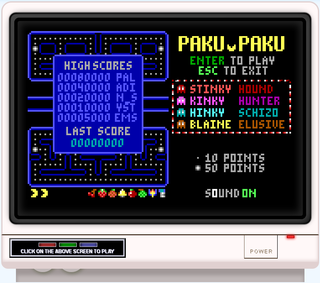
A personal computer game, also known as computer game or abbreviated PC game, is an electronic game played on a personal computer (PC) and form of video game. They are defined by the open platform nature of PC systems.
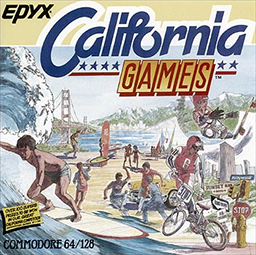
California Games is a 1987 sports video game originally released by Epyx for the Apple II and Commodore 64, and ported to other home computers and video game consoles. Branching from their Summer Games and Winter Games series, this game consists of a collection of outdoor sports purportedly popular in California. The game was successful and spawned a sequel, California Games II.

Robert J. Mical is an American computer programmer and hardware designer who has primarily worked in video games. He is best known for creating the user interface, Intuition, for Commodore's Amiga personal computer (1985), contributing to the design of the Amiga hardware, and co-designing, with Dave Needle, the Atari Lynx color handheld (1989) and the 3DO Interactive Multiplayer (1993).

Gauntlet: The Third Encounter is an arcade-style dungeon crawler role-playing game developed by Epyx and published by Atari that was released for the Atari Lynx handheld system in 1990. Despite using the same packaging artwork that was used for the NES version, The Third Encounter is not a port of the original Gauntlet or its sequel, but instead is a new game developed specifically for the Lynx. It was originally titled Time Quests and Treasure Chests, but it was changed when Atari picked up the license for the Gauntlet franchise from Atari Games.

Summer Games II is an Olympic sports video game developed and published by Epyx in North America, and published by U.S. Gold in Europe, based on sports featured in the Summer Olympic Games. It is a sequel to Summer Games released by Epyx the previous year. Summer Games II was originally written for the Commodore 64 and ported to the Apple II, Atari ST, MS-DOS, ZX Spectrum, Amstrad CPC and Amiga.
Microsoft Flight Simulator began as a set of articles on computer graphics, written by Bruce Artwick throughout 1976, about flight simulation using 3-D graphics. When the editor of the magazine told Artwick that subscribers were interested in purchasing such a program, Artwick founded Sublogic Corporation to commercialize his ideas. At first the new company sold flight simulators through mail order, but that changed in January 1979 with the release of Flight Simulator (FS) for the Apple II. They soon followed this up with versions for other systems and from there it evolved into a long-running series of computer flight simulators.
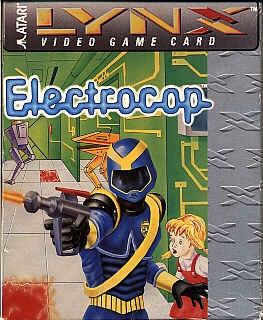
Electrocop is a 1989 action video game developed by Epyx and published by Atari Corporation in North America and Europe for the Atari Lynx. It was released in Japan on November 25 of the same year, where it was distributed by Mumin Corporation. One of the first games written for the platform, it was one of the launch titles that were released along with the system in North America.
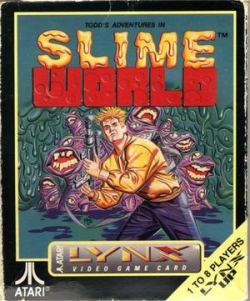
Todd's Adventures in Slime World is a side-scrolling platform video game first released for the Atari Lynx in 1990, with Sega Genesis and PC Engine Super CD-ROM² versions following in 1992.

S.T.U.N. Runner is 3D racing/shooter game released in arcades by Atari Games in 1989. The player pilots a futuristic vehicle which can exceed 900 mph, through various tunnels and courses with changing environments, hazards and enemies. S.T.U.N. Runner uses polygonal graphics for the vehicles and track, and is based on an evolution of Atari's Hard Drivin' hardware. The custom cabinet was designed to resemble the craft that the player pilots in-game.

Ishido: The Way of Stones is a puzzle video game released in 1990 by Accolade and developed by Publishing International. It was designed by Michael Feinberg and programmed by Ian Gilman and Michael Sandige. The game's producer was Brad Fregger, and Brodie Lockard contributed with graphics.

Microsoft Entertainment Pack, also known as Windows Entertainment Pack or simply WEP, is a collection of 16-bit casual computer games for Windows. There were four Entertainment Packs released between 1990 and 1992. These games were somewhat unusual for the time, in that they would not run under MS-DOS. In 1994, a compilation of the previous four Entertainment Packs were released called The Best of Microsoft Entertainment Pack. A Game Boy Color version was released in 2000.





















